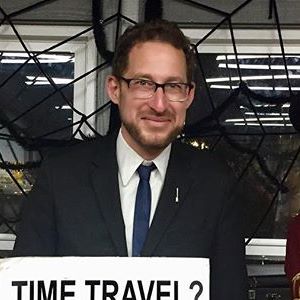
by Fiona Moore
Captain Nemo and the Underwater City
I had low expectations for Captain Nemo and the Underwater City, thinking it would be a bit of enjoyably fluffy escapism. For the most part this is true, but it does have a few things to recommend it beyond that.
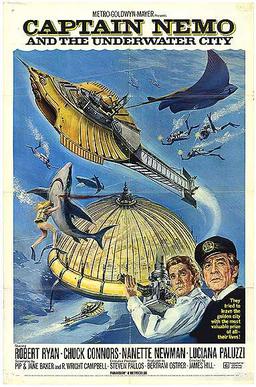
Poster for Captain Nemo and the Underwater City
The Nautilus rescues a small band of survivors from a shipwreck, and takes them to, yes, an underwater city founded by Captain Nemo (Robert Ryan) called Templemer (everyone pronounces it Temple-mere, which makes it sound like a small town in the Home Counties or possibly a plantation in the Old South). They include a plucky and intelligent widow (Nanette Newman) with a young son (Christopher Hartstone), a rugged-faced American senator (Chuck Connors), two comedy Cockney wide-boys (Bill Fraser and Kenneth Connor), a cute and suspiciously well-behaved kitten (name unknown), and an engineer who is clearly about to go over the edge of sanity (Allan Cuthbertson).
Templemer is a utopian community where food and drink and education are free, everyone lives their best lives, and gold is as common as steel is for us. At this point I rolled my eyes, expecting that the surface people would all decide that There’s No Place Like Home and plot to escape this perfectly decent hippie paradise; however, in fact, the newcomers are divided on that point, and their reasons for wanting to leave or stay are all in character and plausible.
 Nemo's guests are less than thrilled at their accommodation.
Nemo's guests are less than thrilled at their accommodation.
The movie explores the frequently-asked question of our time: whether it’s better to engage with the problems of society or just to tune in, turn on and drop out, building a better world outside instead. Nemo and his cohorts have definitely chosen the latter, while Senator Fraser’s reason for wanting to return to the surface is to do the former. The story explicitly takes place at the time of the American Civil War, and Nemo has undergone an ethnic shift to become an American. This gives the implication that Nemo is rejecting his own country’s troubles by retreating to Templemer and, consequently, inviting comparisons with the modern USA (and with Ryan himself, well known as a pacifist and an outspoken critic of the American government). Although the movie seems to want us to side with Senator Fraser, I personally remain unconvinced.
 There's also some nice modelwork, even if it's often hard to see.
There's also some nice modelwork, even if it's often hard to see.
Of course, there are a lot of preposterous things that are overlooked or else are simply there to drive the story along. There’s a giant manta ray for our heroes to fight, which I suppose is a change from the usual giant squid. There’s only the briefest explanation of where Templemer’s population come from. The engineer’s mental collapse is so heavily telegraphed that I kept wishing someone would try and help the poor man rather than let him become another plot complication. There’s also a very long and very boring sequence where Nemo shows his guests around Templemer’s undersea farming setup, which contributes little to the story and isn’t particularly engaging and mostly seems to be there to show off the fact that MGM spent money for an expensive and complicated underwater shoot.
In short, I wouldn’t urge you to rush out and see it, but if it’s on at your local cinema and you have time to kill during the holidays, you could do worse. Two and a half stars.

by Jason Sacks
Marooned
What if the real heroes of NASA weren’t the astronauts but instead the ground crew? What if the astronauts were all either bland or jerks, while Mission Control were all brave, steadfast problem solvers to a man? What if a movie with those premises promised a thrilling story but delivered leaden action?
Imagine that movie, and you’ll get something like Marooned, a new film from director John Sturges seemingly released to capitalize on America’s fascination with the space program and our incipient worries about space failures. We might expect Marooned to be a thrilling and au courant film about man's perils in space. But Marooned is more concerned with the men on the ground than the men in space. That fact helps make for a slow trudge of a film.
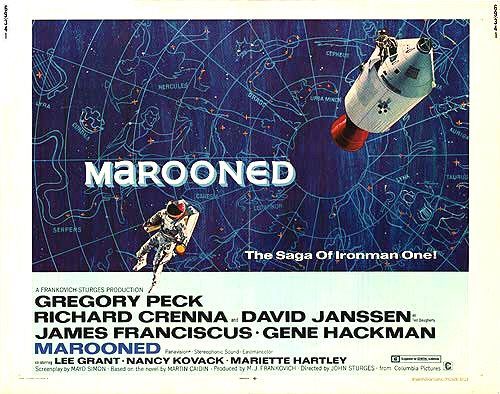
As the film begins, three astronauts played by Richard Crenna (The Real McCoys, Slattery's People, The Sand Pebbles), James Franciscus (The Investigators) and Gene Hackman (Hawaii, Bonny and Clyde) have completed their assignment to spend several months working in an orbiting laboratory. As the pilots begin their efforts to return to Earth, however, they find the thrusters malfunctioning on their rocket. It will take a heroic effort from the ground crew, led by Gregory Peck (needs no introduction) and David Janssen (The Fugitive), to return the astronauts to Earth. But will that dedicated crew succeed before oxygen runs out in the space capsule? And how will a hurricane at Cape Kennedy affect the rescue efforts?
It's an intriguing narrative for a movie (not to mention a book), and it's certainly very on-target for our country’s current obsessions. Marooned had the promise to be something pretty special; instead, it is a conservative, hide-bound, badly-acted failure.
Much of the film’s failure comes from an odd decision by the filmmakers: instead of focusing on the astronauts, the film spotlights their ground crew, particularly the efforts of their brave leader, Gregory Peck, to save the spacemen. In theory this could be a logical approach to the story which harnessed celebrity charisma to add seriousness to the rescue effort. Peck is a longstanding, proven screen presence. He gives the film a feeling of gravitas. But, come on, film fans: would you rather watch Gregory Peck struggle though rescue contingencies or spend more time with the astronauts trying to come up with plans? Without Cronkite (or even Chet and David) to spice things up, I can't imagine an audience is interested in watching the efforts of a bunch of white-shirt-and-tie men reading long lists of protocols off checklists, scene after tedious scene.

All that focus on protocols makes the film feel slow. But that very same slowness feels like a deliberate approach to the story. This is a workmanlike film which focuses on the amazing power of bureaucracy to solve complex problems. Solving these problems takes time, and it’s important to be able to be systematic and mark important items off a checklist. If only this movie had been cut to a crisp 90 minutes, the filmmakers’ gambit might have worked. Instead, Marooned is sluggish.
Peck seems to phone his role in. The intended gravitas from his role comes across more as torpor than as professionalism. Janssen and Franciscus bring their usual decent TV-level acting to their roles. But Hackman is especially badly selected for his role – his character, Buzz Lloyd, is impulsive and self-centered. Viewers grow tired of Buzz's histrionics and wonder how in the world someone like that made it through astronaut school. It's surprising to see Hackman perform so poorly after he recently delivered fine performances in Bonnie and Clyde and Downhill Racer, so hopefully this was just an anomaly. With his rugged good looks, Hackman looks more like a cop than an astronaut.
The film offers viewers a few small moments with the astronauts' wives. Those moments perhaps convey the most sense of the astronauts' peril, since the wives are allowed to actually emote. Veteran actresses Lee Grant (Peyton Place, In the Heat of the Night), Mariette Hartley (Star Trek: All Our Yesterdays) and Nancy Kovack (Star Trek: A Private Little War) have all done good work in the past. Here they are called upon to do little more than look concerned and show a little attitude. The actresses actually execute their assignments with aplomb. I especially enjoyed Kovack's frustrated resignation about the life she signed up for as the wife of an astronaut. She conveys a lot in small gestures and facial expressions.
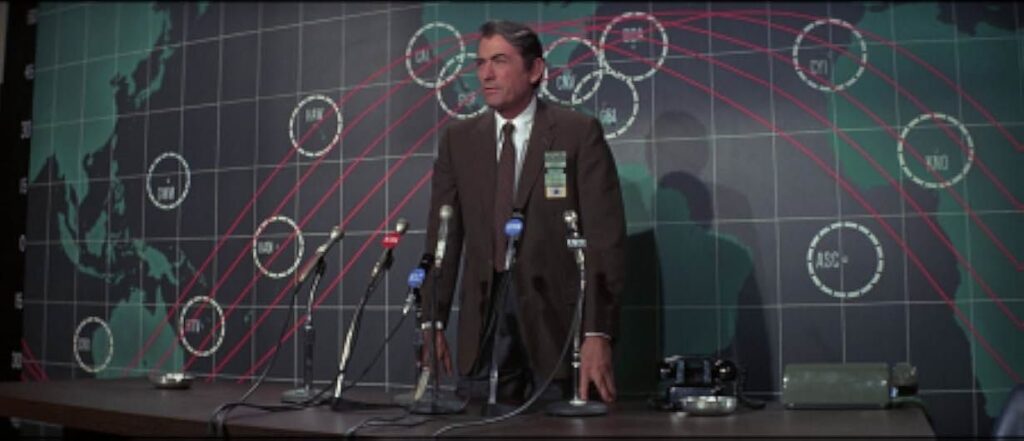
The ending, again slow, is genuinely captivating nonetheless, and takes a few surprising twists. I became very invested in this film in its last 20 minutes and wish we had more scenes like these. Though it was a bit hard to root for these dull men to be rescued, the attention to detail around astrophysics and international cooperation were stellar.
John Sturges is usually an excellent director of action movies – see Bad Day at Black Rock, The Magnificent Seven or The Great Escape. But he probably shouldn’t have journeyed into space with our boring astronauts. Marooned just never comes alive like The Magnficent Seven did: the characters never popped, the action never coruscated, and the direction lacked flash.
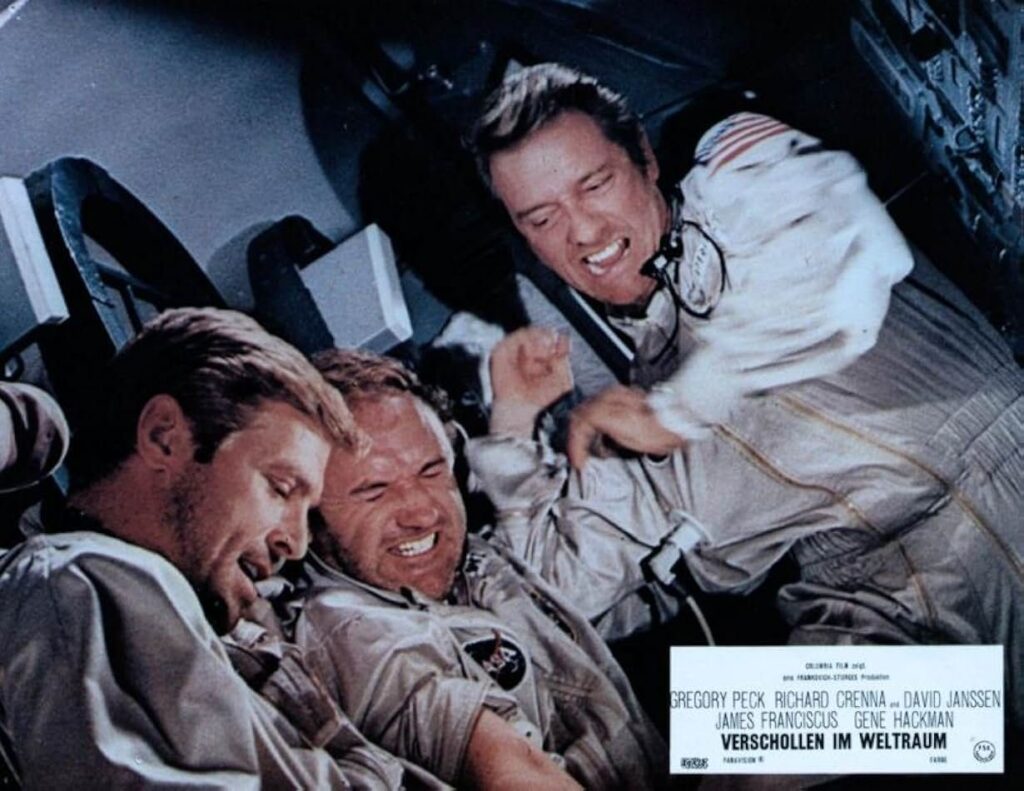
But there’s a deeper problem here as well. One of the reasons The Great Escape was such a smash hit was that many viewers could see themselves in the zealous Steve McQueen, endlessly looking to escape his prison life. McQueen’s Virgil Hilts felt like a counterculture hero on the run, not dissimilar to the characters in Easy Rider or Bonnie and Clyde. But Marooned is a conservative, conventional movie. Its message is to trust the government, pray for the best to happen, and follow rules. Marooned is a film for Nixon’s Silent Majority and feels woefully out of place next to this year’s big hit films like Butch Cassidy, Midnight Cowboy, and Goodbye, Columbus.
Two stars.

![[December 28, 1969] Cinemascope: Two if by Sea, Three if by Space! (<i>Captain Nemo and the Underwater City</i> and <i>Marooned</i>)](https://galacticjourney.org/wp-content/uploads/2024/12/691228posters-672x372.jpg)


![[April 20, 1965] Less Satanic Than Expected (John Sturges' <em>The Satan Bug</em>)](https://galacticjourney.org/wp-content/uploads/2020/04/650422_movieposter-672x372.jpg)







